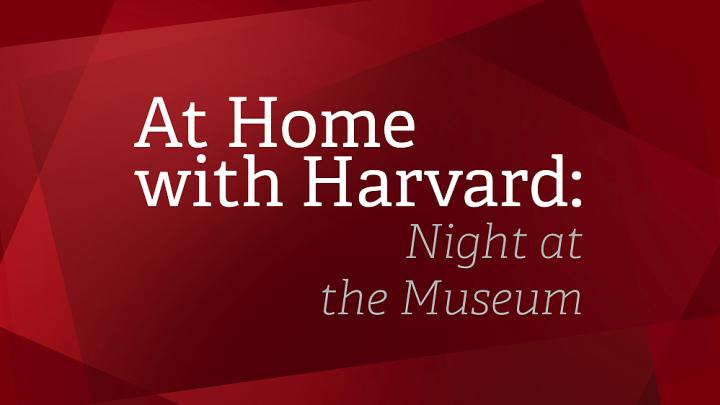This is the fourth installment in Harvard Magazine’s new series, “At Home with Harvard,” a guide to what to read, watch, and listen to while social distancing. Read the prior pieces, featuring stories about Harvard's Arnold Arboretum and spring blossoming, famous and not-so-famous Harvardians in the movies, and Harvard’s literary scene.
Harvard’s museums, collections, libraries, and diverse academic units are a rich source of carefully curated, eye-opening, mind-expanding, and beautiful exhibitions. So are the diverse people closely associated with the community. We bring together here some of our favorite articles about some of them, with guides, where available, about how to go deeper on your own.
The Bauhaus and Harvard
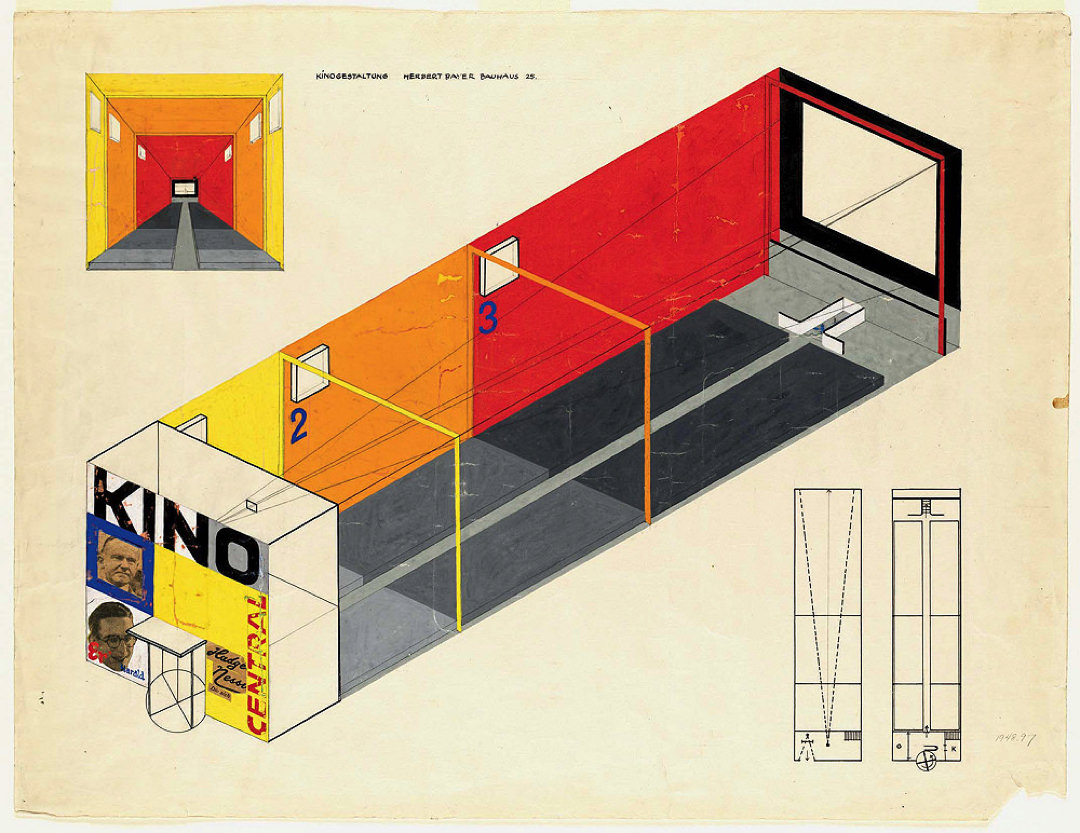
Typography instructor Herbert Bayer’s design for a cinema (c. 1924-1925) is a stark contrast to the elaborate theaters of the 1920s.
Image courtesy of the Harvard Art Museums and Busch-Reisinger Museum, © President and Fellows of Harvard College
The Bauhaus school and movement influenced architecture and design worldwide—and left a lasting impact on the University when founder Walter Gropius came to the United States and chaired the architecture department at the Graduate School of Design. Former Ledecky Undergraduate Fellow Lily Scherlis ’18, stopping by Cambridge on her way home for Christmas in 2018 from a fellowship in Berlin, visited the Harvard Art Museums to report “What a Human Should Be,” as a run-up to the celebratory centennial exhibition, “The Bauhaus and Harvard.” That show drew on the 50,000 pertinent objects in the University collections—design, textiles, architecture, and more. The works, she wrote, all reflect the Bauhaus founders’ effort “to find a home for art in a freshly modern world. For them, this involved excavating primordial geometry out of unruly matter, breaking the rainbow into bite-sized chunks, learning to translate every crumb of human experience into an acutely expressive line.”
Polaroid Portraiture
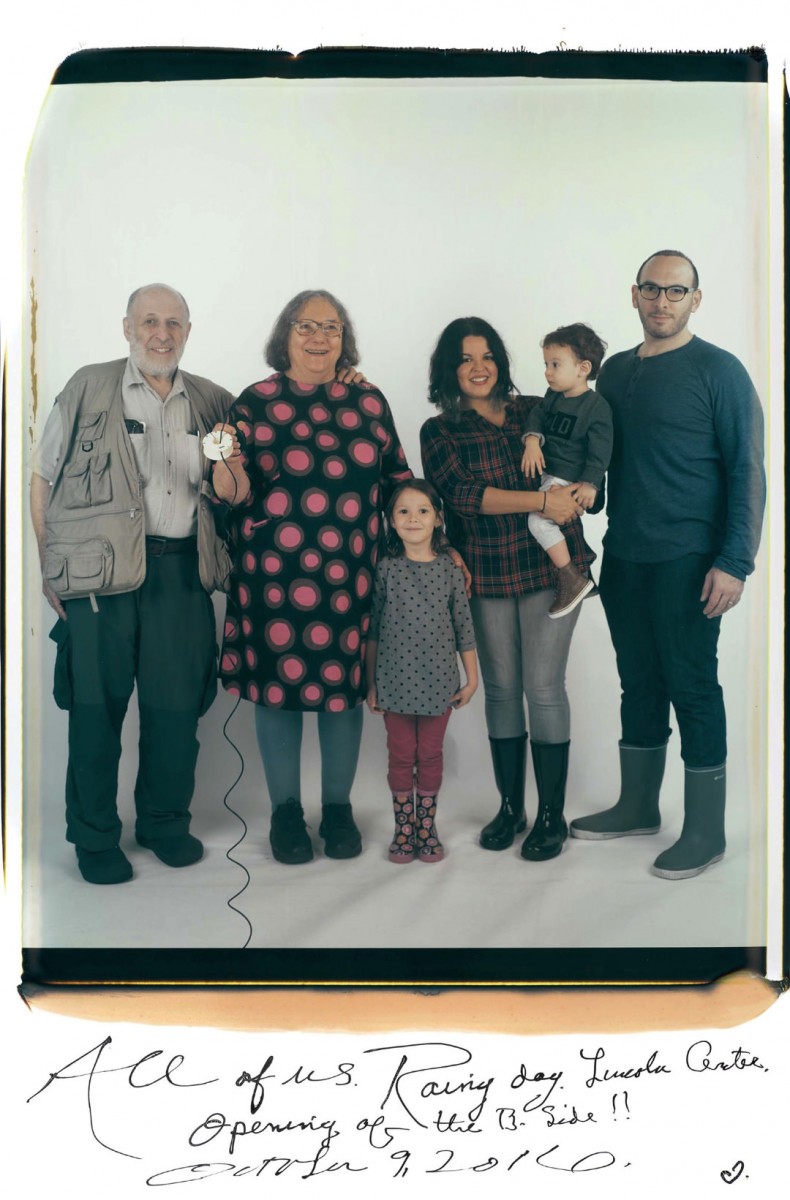
Photograph by Elsa Dorfman
In the age of the smartphone, selfies, and Instagram, what room is there for film photography, and for large-scale images? Plenty, and none so vivid as the stunning, revealing Polaroid portraits created by Elsa Dorfman, BI ’73, brilliantly profiled in Sophia Nguyen’s “The Portraitist.” A standard Dorfman portrait, she reports, is “24 inches tall and 20 wide, produced by a 200-pound camera that’s one of only six of its kind in the world.” Most are family photos, whose meaning—as Nguyen describes them—resonate especially at this social-distancing moment: “Family photos are basically ritual objects, meant to be pored over together, to be strip-mined for information: how Mom used to wear her hair; Dad’s hippie phase; that was the style back then. They furnish evidence, and provide an excuse to compare memories and come to some agreed-upon version of the story.” (As for Polaroid, an iconic Cambridge innovator, take a look at this amazing exploration drawn from the deep company archives held at Harvard Business School’s Baker Library Historical Collections.)
Colorful Creatures
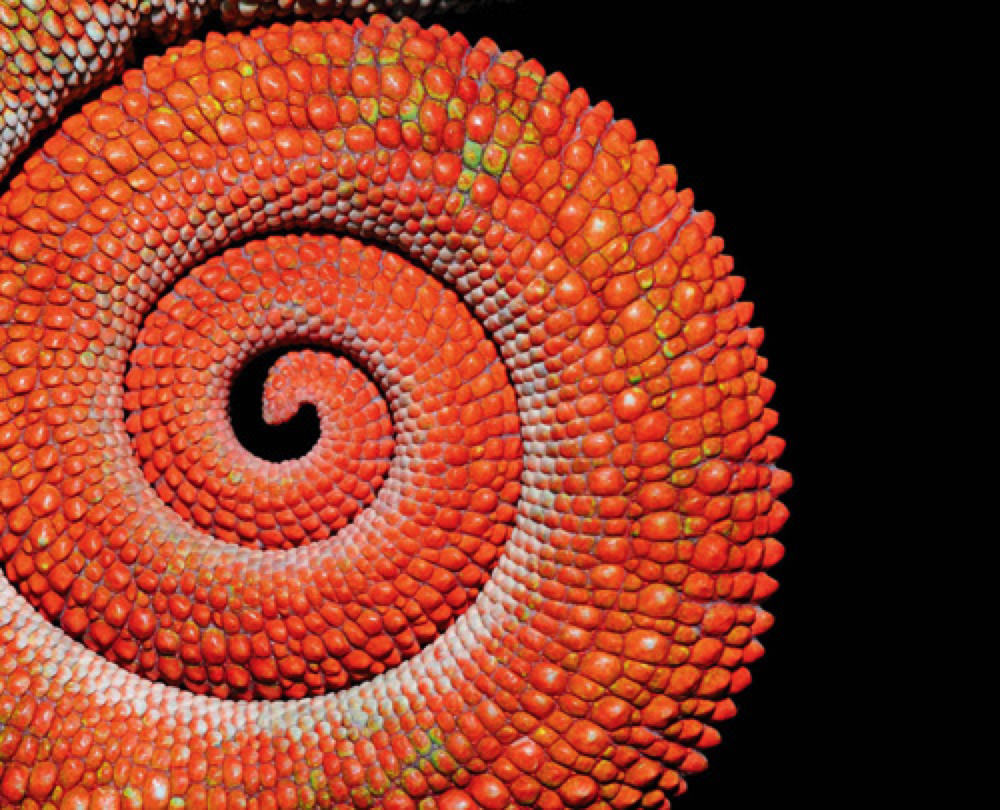
Tail of the panther chameleon, Furcifer pardalis, of Madagascar. The same species appears on the cover (see within the article link, below). Chameleons do not change color to match their backgrounds, but to communicate excitement, anger, fear, and other emotions.
Photograph by Paul Bratescu/Courtesy of the Harvard Museum of Natural History
Great painters use color masterfully. But they pale in comparison to nature, as the late Christopher Reed reported in “Animals Speak Color,” a dazzling display from the Harvard Museum of Natural History (the article links to a video tour of the exhibition). The colors themselves can be read to reveal important meanings in nature, Reed reported: “The poisonous dart frogs use conspicuous color to tell predators that they are not good to eat. Similarly, a venomous coral snake sports rings of bright color to advertise that it isn’t to be messed with—by a bird considering it for lunch, for instance—while a milk snake, which isn’t poisonous and could be taken quite safely, looks much like a coral snake and trades on the latter’s reputation.” (Fans of Reed’s wonderful, and wonderfully fun, prose, might find “Dazzlers,” his earlier account of the Art Museum’s paradigm-busting exhibition on how classical marble sculptures looked when they were painted bright hues, even more astonishing. He also had a thing for ancient coins, and covered the collections—and a notorious theft—zestfully: a gripping true-crime tale.)
The Physics of Everyday Things

Using an origami model, Lakshminarayanan Mahadevan demonstrates how folds in the leaves of a hornbeam or a beech are coupled, allowing them to easily open and close.
Photograph by Jim Harrison
Turning from exhibitions, per se, to the way scholars visually illustrate and pursue their research, rediscover managing editor Jonathan Shaw’s “The Physics of the Familiar,” a profile of Lakshminarayanan Mahadevan (“Maha”)—perhaps the only applied-mathematics cover feature in the magazine’s history. Beginning from such problems as “What will happen as [a] drop of paint dries? Why should we care?” Maha teases out, precisely, the mechanisms by which, for example, a flag flutters in the wind, or why an elephant’s trunk resembles a carbon nanotube. This is natural philosophy at its best, vividly described and illustrated (including in an accompanying video).
The Age of Exploration

Dutch artist Jan Saenredam used copperplate engraving before 1600 to create these celestial globe gores.
Houghton Library, Harvard College Library/Liechtenstein Map Collection, *51-2459 pf.
In an historical vein, “Spheres of Knowledge” surveys the age of exploration: artistic and scientific discovery in Renaissance Europe, as artists like “Albrecht Dürer, Hans Holbein, and Peter Breugel enthusiastically depicted what would today be considered scientific subjects”—two centuries before the word “scientist” was coined. A fascinating, and visually captivating tour, with an image gallery and video, by art director Jennifer Carling and managing editor Jonathan Shaw.
250 Years of Japanese Art
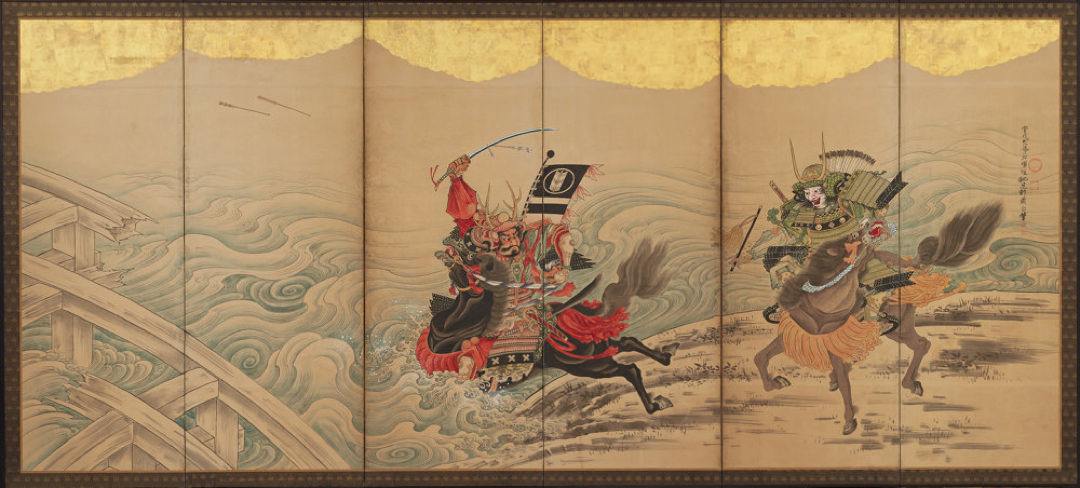
Soga Shōhaku, Race at Uji River (detail), Japanese, Edo period, c. 1764.
John Tsantes and Neil Greentree; © Robert Feinberg.
And from the current moment, join associate editor Lydialyle Gibson on a gorgeous tour of “Painting Edo,” the Art Museums’ current—and currently, sadly inaccessible—exhibition, its largest ever, of works from the Edo period in Japan: silk screens, landscapes, portraiture, amazing depictions—detailed and delicate—of birds and flowers and fish. The works span the development of “a sleepy fishing village on the eastern edge of Japan” into “the largest city in the world”: today’s Tokyo. A balm and an introduction to a marvelous artistic culture, with an extensive image gallery.
Enjoy!
~John S. Rosenberg, Editor
Migration Across Man-made Borders

Jim Goldberg, “Home, Hyderabad, India,” 2008, printed 2019.
Francis H. Burr Memorial Fund, 2019.104. © Jim Goldberg; courtesy Pace/MacGill Gallery, New York. Image courtesy of Harvard Art Museums/Fogg Museum
Art is for pleasure, but it’s also for politics, perhaps uniquely so today. Last fall, I collaborated with Harvard Magazine art director Jennifer Carling to cover the Art Museums’ exhibit “Crossing Lines, Constructing Home: Displacement and Belonging in Contemporary Art”—a gorgeous, intimate, and unforgettable look at the migrant experience that has remained with me ever since. Some of the images convey a clear point of view, like an oversized photograph of a Border Patrol target practice range in Texas, with human-shaped decoys shot through with bullets, and the foreground littered with gun casings. Others are more muted or ambiguous, and all the more captivating. In a news environment that can feel noxious and deafeningly loud, these images are a tonic. After reading our feature, you can view more of the pieces on the Art Museums’ website.
~Marina Bolotnikova, Associate Editor
